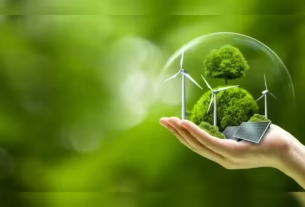In Short : On August 4, 2025, Union Power Minister Shri Manohar Lal presided over a high-level Parliamentary Consultative Committee meeting that focused on grid-scale energy storage devices to strengthen India’s energy transition toward a net-zero emissions future and increase the reliability of renewable energy sources.
Important Policy Measures & Projects
• One of the biggest worldwide initiatives of its kind, the government has committed ₹9,160 cr under the Viability Gap Funding (VGF) program to support 43 GWh of Battery Energy Storage Systems (BESS).
• A financial barrier to widespread deployment has been removed with the waiver of Inter-State Transmission System (ISTS) fees for BESS and pumped-storage hydropower (PSP) projects put into service by June 2028.
• To expedite permits for new hydro storage capacity, the Central Electricity Authority (CEA) will run a Single Window Clearance Cell for PSP projects.
Strategic Objectives & Impact on the Energy Sector
• During the discussion, the Minister reiterated India’s goals to achieve 50% of installed electrical capacity from non-fossil fuel sources by 2030 and a 45% reduction in the GDP’s emissions intensity by 2030 compared to 2005 levels.
• In order to control intermittency, permit peak shifting, and supply grid ancillary services, a focus was focused on integrating energy storage systems with renewable energy sources, particularly solar and wind turbines. Minister of State Shripad Yesso Naik emphasized in his closing remarks that India had already exceeded the 50% non-fossil capacity milestone, five years ahead of plan.
Integrated Ecosystem for Clean Energy and Storage
• By addressing major structural issues impeding wind, solar, and photovoltaic (PV) energy plants, this effort ensures a steady supply during periods of reduced generation.
• In India’s changing electricity mix, battery storage systems and pumped hydro stand out as essential infrastructure for energy efficiency, climate action, and larger decarbonization initiatives.
• Green jobs, skill development, and the growth of a domestic clean tech employment ecosystem centered on manufacturing, installation, operations, and maintenance are anticipated to be stimulated by the scope and design of the BESS program.
Important Takeaway
India is taking a bold step to combine its drive for renewable energy with Energy Storage Systems (ESS) in order to guarantee reliable, high-quality power as well as to reduce unpredictability. Together with regulatory assistance (such as ISTS waivers and single-window clearances), the scope of the VGF-backed program highlights a comprehensive approach to energy efficiency, sustainable energy, and the deployment of reasonably priced renewable energy.
India’s larger objectives—climate action, net-zero emissions, and an energy system based on clean energy technologies like solar PV and wind energy—can only be achieved with this concerted effort, which is bolstered by a workforce empowered by green jobs and the development of energy transition skills.




